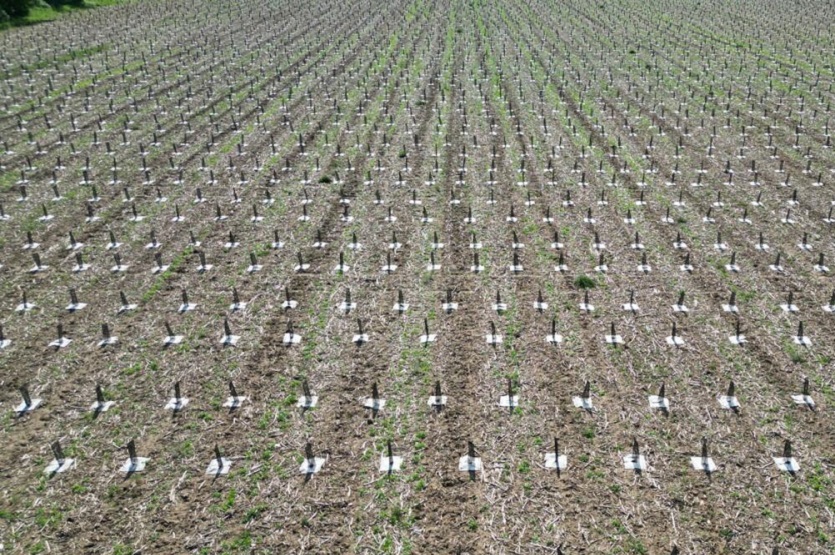They are still so small that they must be protected from the voracity of rabbits, but hundreds of thousands of trees are already taking root, northwest of Paris, on a former agricultural plain with soil polluted by a century of spreading the capital's wastewater.

This recreational forest, currently being created in Val-d'Oise, represents one of the most ambitious reforestation projects carried out in France for centuries.
Over ten years (2019-2029), more than a million trees are to be planted there, using species carefully mixed to resist climate change.
In the first plots, verdant in spring, pheasants take flight among the service trees, plane maples, and Corsican alders planted five years ago. "You see, the birches already create a forest atmosphere," says Charles Cohen, head of the afforestation project, among the trees several meters tall.
At 28, this engineer from the National Forestry Office (ONF) is young enough to hope to see "a mature forest." "After 30 years, the established trees will produce seeds that will naturally spread right and left," he predicts. "The pioneer birch trees will establish themselves very quickly but will fall after 100 years. Next to them, the oaks will be able to live for several hundred years."
Discreetly, almost silently, the Maubuisson forest is already growing, some twenty kilometers from Paris, across seven communes and between two rivers, the Seine and the Oise. Its name comes from an abbey founded in the 13th century by a French queen, Blanche of Castile.
Former overflow of the Paris sewers
While it's rare to create large forests, "it's even rarer on large polluted areas," emphasizes Maxime Algis, a doctoral student in political science and urban planning, who has studied the "not innocent" history of the soils of this plain. "These are situations found in many European countries in the 21st century: degraded soils and environments, in this case a former market garden site fertilized by wastewater, loaded with heavy metals."
In 1892, Paris suffered a deadly cholera epidemic, and the authorities sought to clean it up. From the end of the 19th century, the Pierrelaye-Bessancourt plain was used as a sewage treatment area for untreated sewage from the capital and its suburbs.
The soil's fertility initially favored intensive market gardening: beans, spinach, and thyme were shipped to Parisian markets. This was until studies revealed, in 1997, heavy metal pollution that made the crops unfit for human consumption. Environmental groups then sounded the public alarm. In 2000, market gardening was definitively banned.
Why not plant trees and more trees? suggested some of the mayors of the surrounding communes in 2006. The idea of a forest gained ground, eventually becoming a major public utility project, labeled Greater Paris, in 2011, under the presidency of Nicolas Sarkozy.
"On a French scale, the creation of an entire massif is exceptional, especially between urbanized areas," emphasizes Bernard Tailly, 80-year-old former mayor of Frépillon, who now chairs the Pierrelaye-Bessancourt Plain Joint Development Association (SMAPP), which is leading the project.
However, the possibility that heavy metals could still migrate into the water table remains a possibility. "We are monitoring soil acidification," Mr. Tailly comments reassuringly. The public will not have access to the few most polluted areas, and the consumption of forest products will be prohibited.
"Open-air laboratory"
Charles Cohen describes this forest as "a story of rebirth," which shows that "when you put in the effort, many beautiful things are possible."
Winter after winter, the planting was done manually. In February, five men planted "1.500 trees in one day," according to their team leader, 40-year-old Iviça Jerinic, placing sheaths around the aligned shoots "to protect against rabbits, which can eat everything in one night."
Existing woods and new plantations will eventually form a mosaic forest of 1.340 hectares, and for the ONF, "an open-air laboratory".
Because "climate change is happening now," insists Mr. Cohen, recalling that the site experienced "two years of drought and then two years of rain." Turkish beeches and downy oaks from the Mediterranean and Languedoc were planted, because the ONF anticipates that "the climate will be more Mediterranean than oceanic."
Selecting dozens of species makes it possible to "avoid the vulnerability of a monoculture that can be attacked by a pathogen," the engineer emphasizes. Chestnut trees were excluded because in the neighboring Montmorency massif they are decimated by "ink disease."
The total budget for the creation of the Maubuisson forest exceeds 84 million euros. Many projects remain to be finalized regarding the 6.000 plots of land to be purchased or expropriated, and it has been necessary to eliminate illegal waste dumping, put an end to illegal occupations, and combat "invasive alien species."
Local residents often ask Mr. Tailly, "So, how's your forest coming along?" He replies that we'll have to wait a little longer before we see the plain revived as a natural setting, with schoolchildren observing its trails open to hikers, cyclists, and horse riders.


Comment